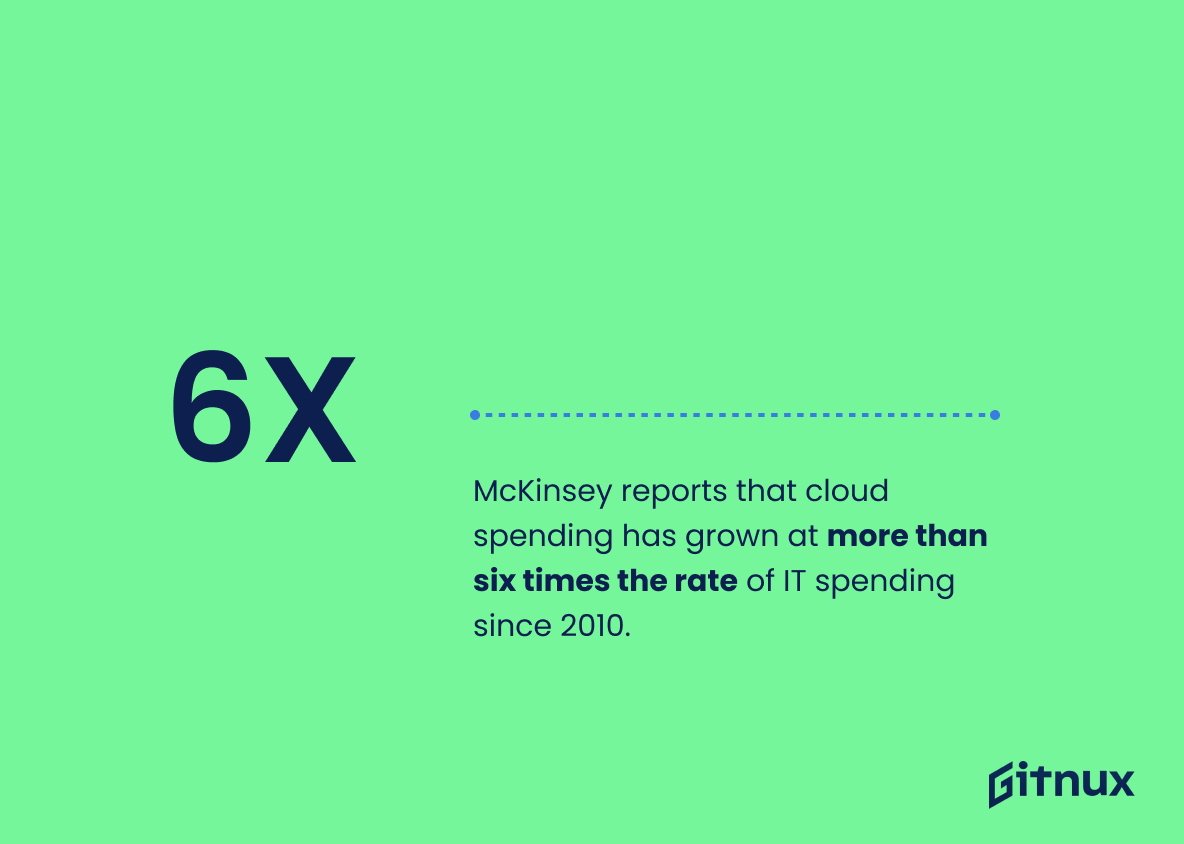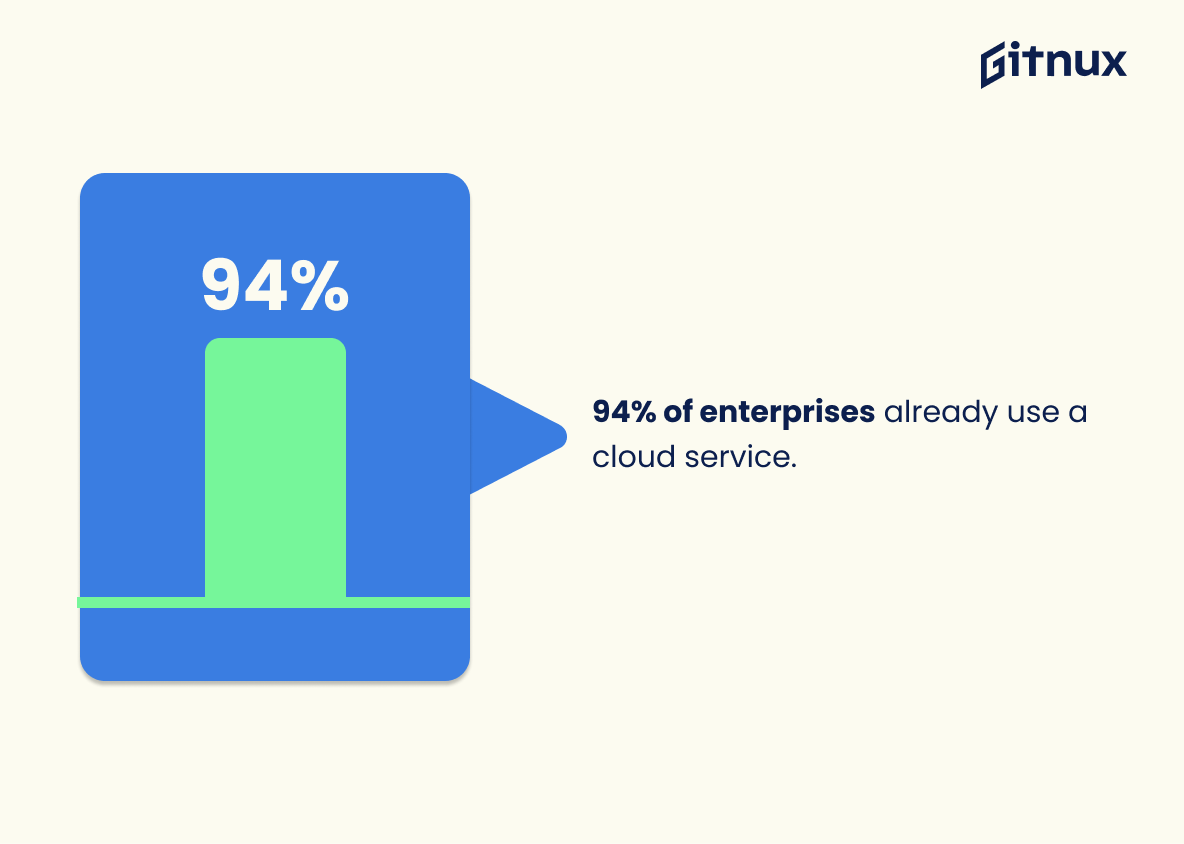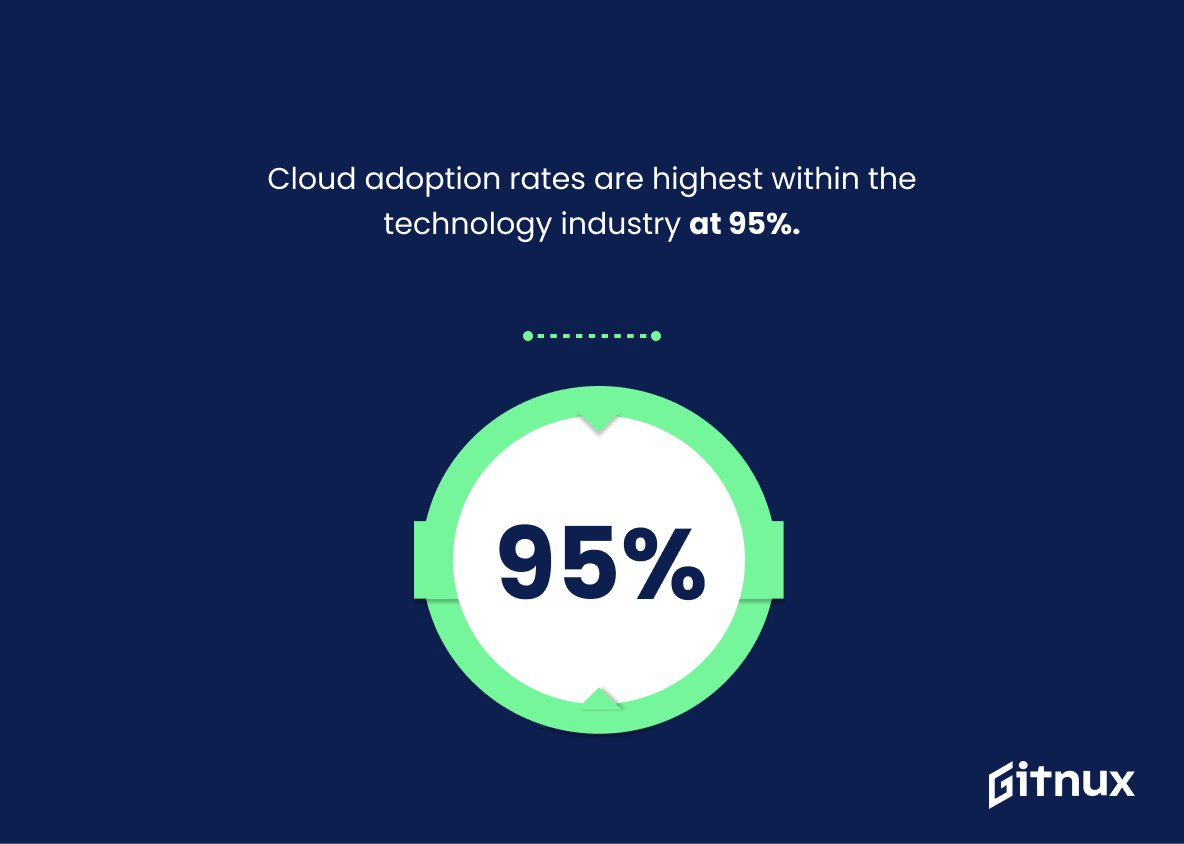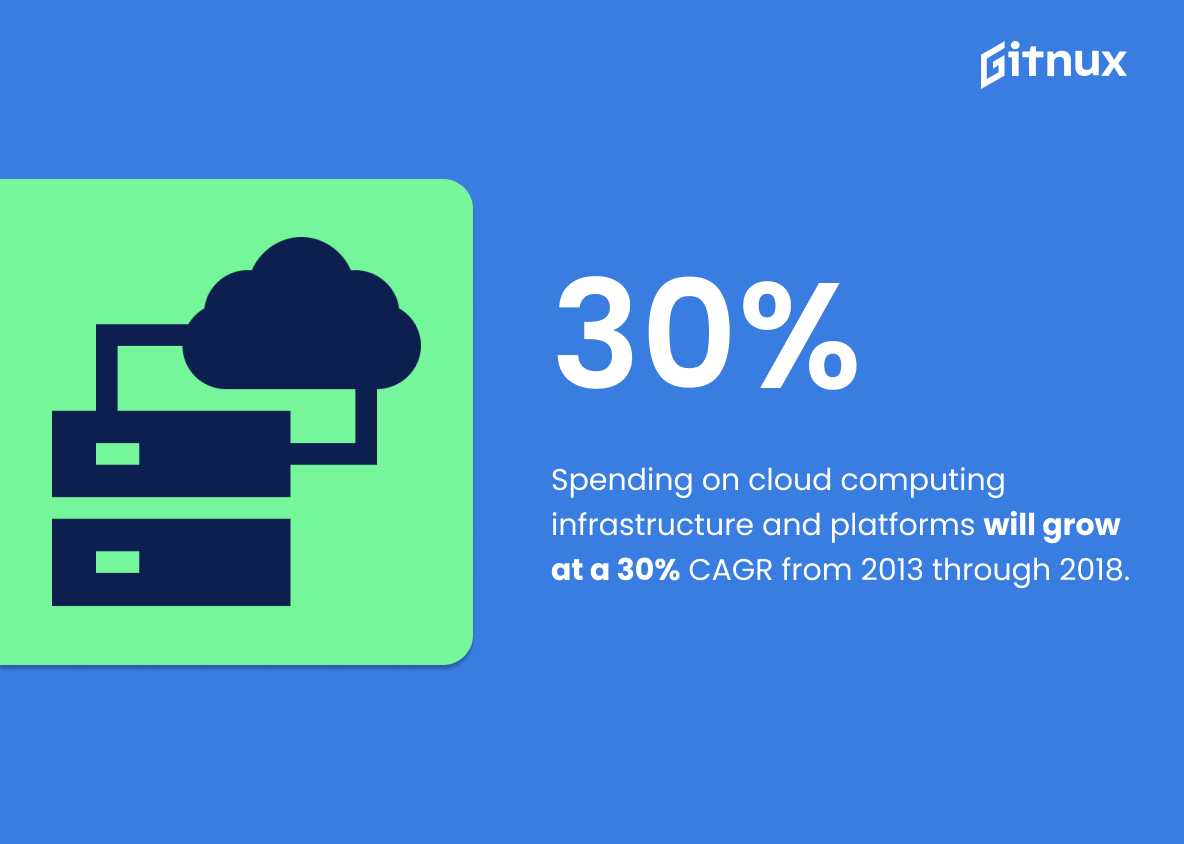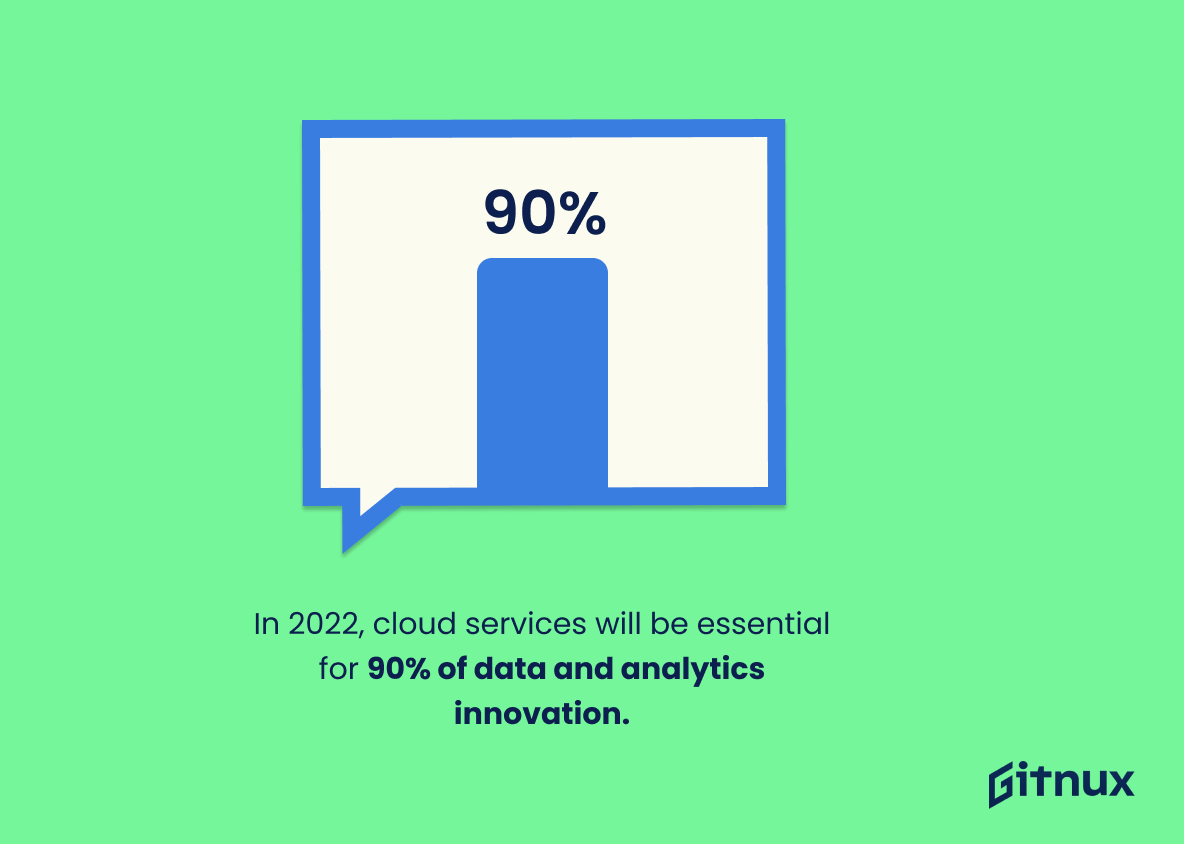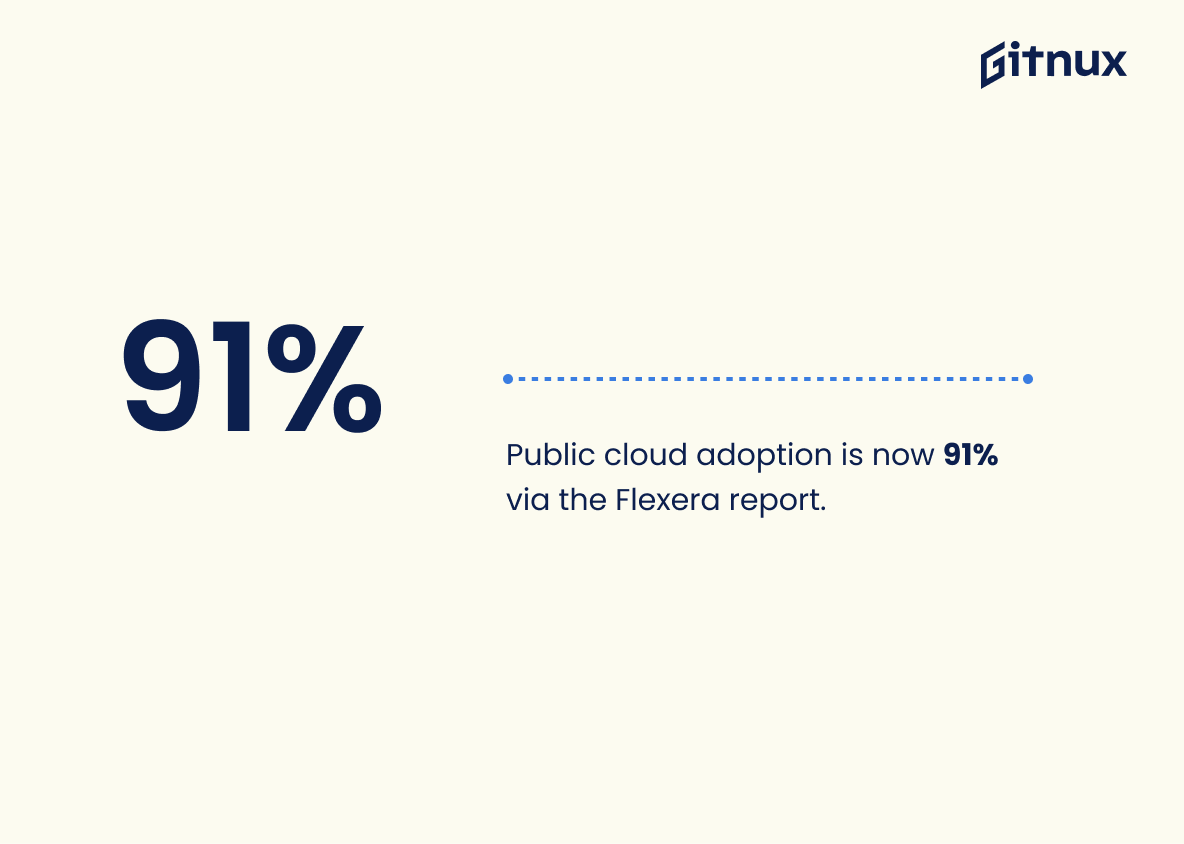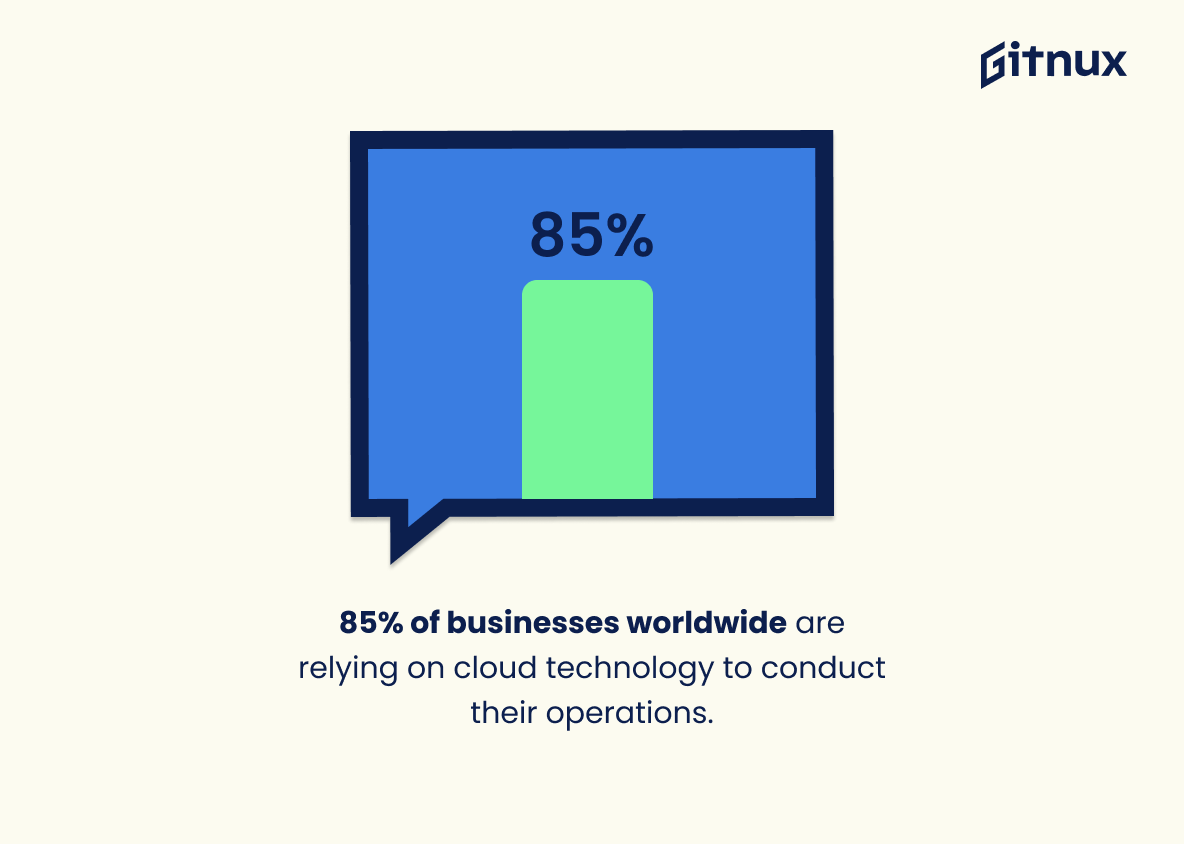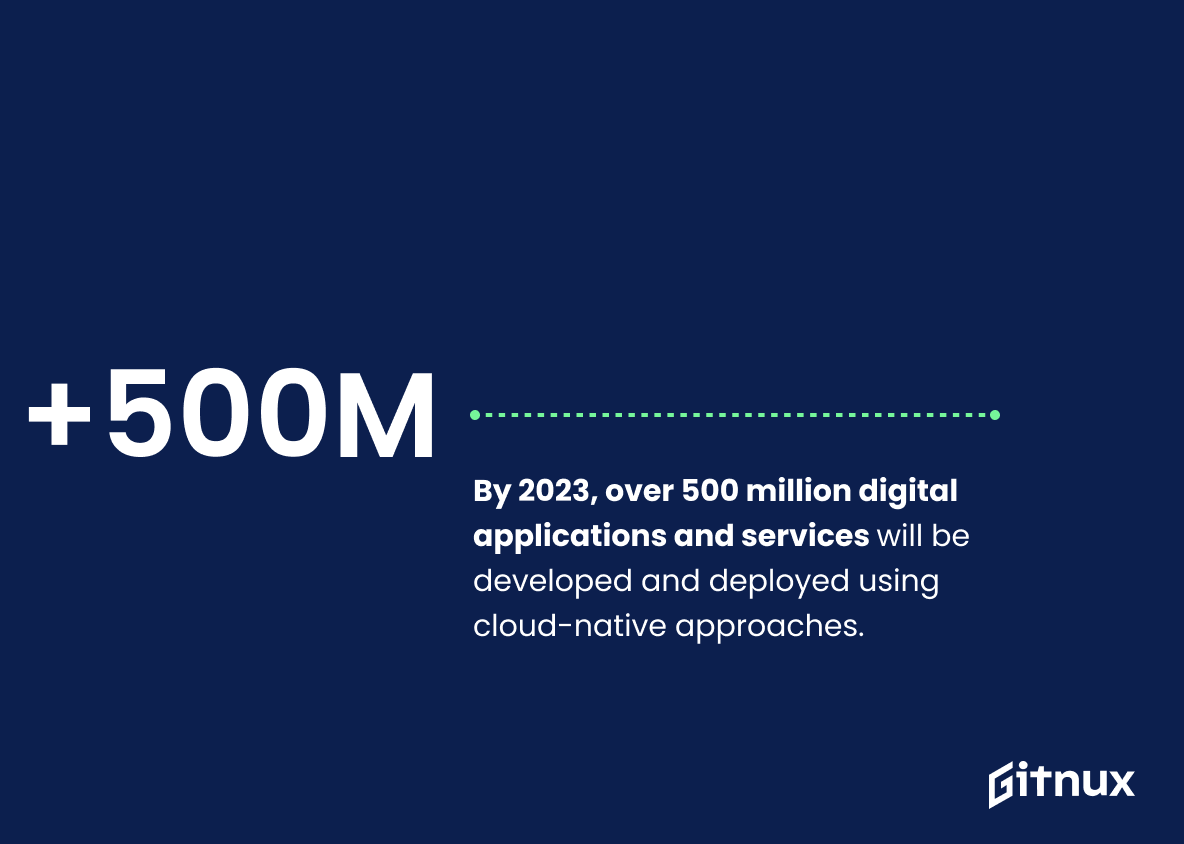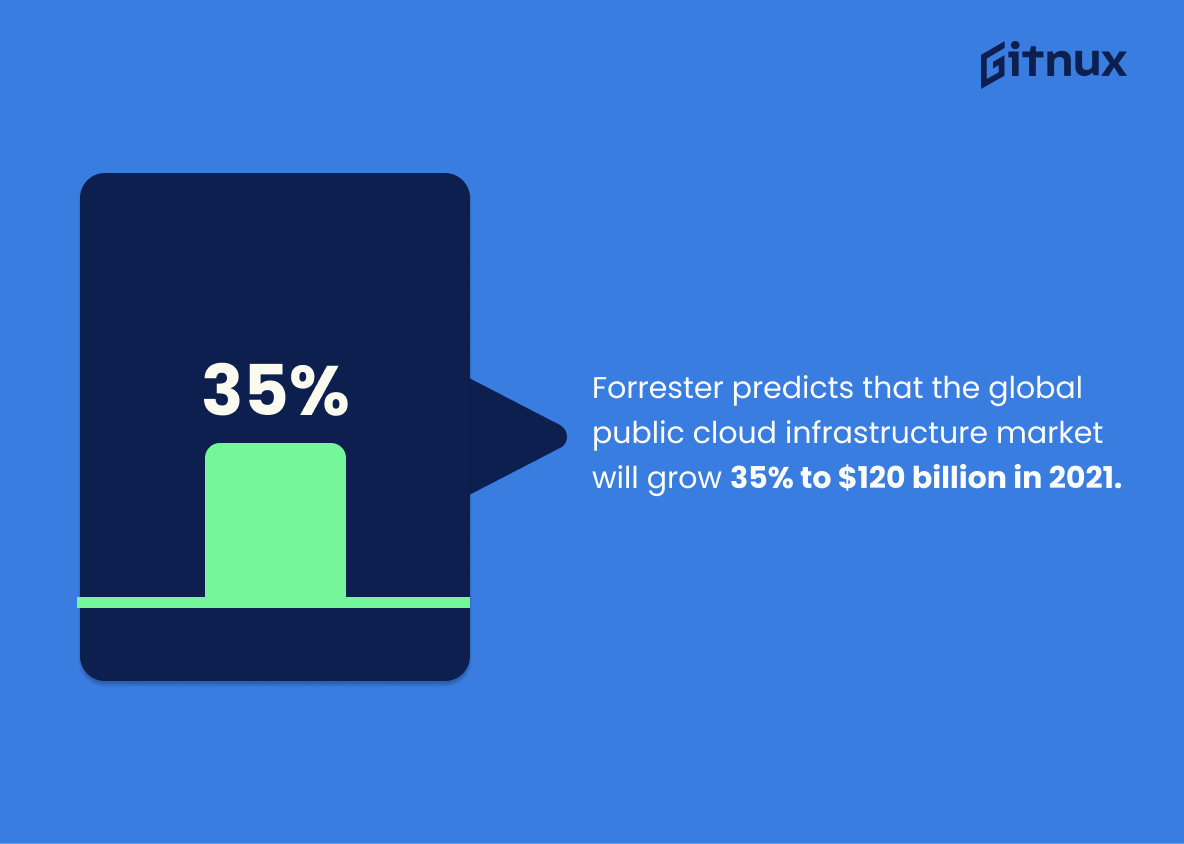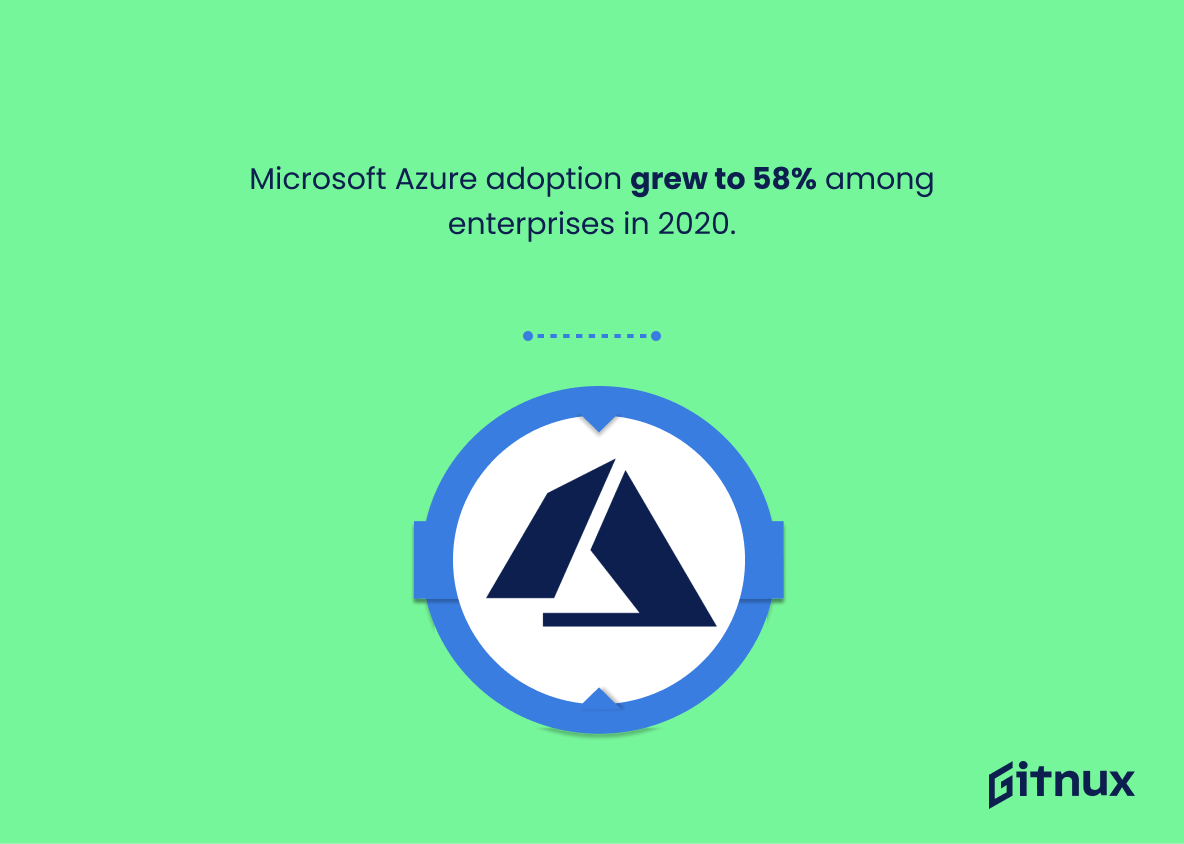As digital transformation soars across the globe, businesses of all sizes are leaning towards cloud adoption to streamline their operations and improve collaboration. The ever-evolving technology has proven that with the cloud, sky is certainly the limit. But just how many companies are hopping on this technological bandwagon? Our extensive guide dives into the latest Cloud Adoption Statistics, providing a comprehensive overview of the current landscape, the projected trends, and the remarkable surge in this domain. Whether you are contemplating a shift to the cloud or looking for insights to bolster your strategy further, these hard-hitting numbers are sure to enlighten and empower you. Let’s unleash the power of data to understand the true potential and impact of cloud computing on the business world.
The Latest Cloud Adoption Statistics Unveiled
90% of companies are on the cloud.
Breathing life into the realm of cloud adoption, this strong statistic unveils a narrative of a seismic shift towards cloud technology. Landscape-altering data like ‘90% of companies are on the cloud’ underscores the ubiquity and prevalence of the technology and emphatically signals that cloud adoption is no longer an exception, but the rule. This forms the backbone of understanding for readers, revealing the essence of current market trends. Ultimately, it syncs with the throbbing pulse of the corporate universe, empowering businesses to elevate their potential, join the revolution and stratospherically soar in the cloud.
Gartner predicts the worldwide public cloud services market will grow 18% in 2021 to total $304.9 billion.
Unveiling the future prospects of the public cloud services sector, Gartner’s prediction is like a looking glass for corporate strategists, software firms, and potential investors eyeing the cloud sphere. With an impressive forecast of 18% growth amounting to $304.9 billion in 2021, this indicator not just validates the accelerating pace of cloud adoption worldwide but also articulate the increasing trust businesses are placing in cloud-based solutions. This surge, implicitly reflecting in the statistic, paints quite a techno-savvy picture for enterprises, making it a key facet to understand in any discourse on Cloud Adoption Statistics. Delving deeper, the statistic serves as a compass, guiding stakeholders about the potential revenue, market trends, and investment opportunities waiting to be harnessed in the cloud domain. It is indeed, the bellwether for cloud profitability.
McKinsey reports that cloud spending has grown at more than six times the rate of IT spending since 2010.
Delving into the expansive world of cloud adoption, a noteworthy revelation emerges from McKinsey’s studies. The soaring rate of cloud spending, outpacing IT spending by sixfold since 2010, serves as a testament to the dramatic shift businesses are making towards this technology. This is not just a random fact; it’s a powerful signal demonstrating the increasing reliance and confidence businesses place upon the cloud, anchoring its importance in our increasingly digitized world. In the grand scheme of Cloud Adoption Statistics, this information forms a crucial cornerstone, prompting readers to pause, reflect and realize the undeniable trend of migration towards cloud technologies.
94% of enterprises already use a cloud service.
In the vibrant paradigm of the digital sphere, an astonishing 94% of enterprises already bask in the advantages of a cloud service. This compelling figure not merely underscores the prevalence of cloud technology within the business landscape. It’s akin to a vibrant brushstroke on the vast canvas of IT solutions, vividly painting the undeniable truth of how ingrained cloud services have become in modern entrepreneurship. The story this number tells is not only of popularity, it’s beyond a trend—it signifies a new standard, a benchmark for conducting business. Hence, when examining cloud adoption statistics, this 94% serves as the pulse of change, flashing the message in bright neon – cloud is no longer optional, it’s essential.
Cloud adoption rates are highest within the technology industry at 95%.
Highlighting the intriguing fact that an impressive 95% of the technology industry has embraced cloud adoption intensifies our understanding of the cloud’s potential. This staggering percentage serves as a prominent endorsement of cloud technology, demonstrating its perceived value and efficacy within an industry renowned for its innovation and understanding of cutting-edge solutions. As pioneers of the digital frontier, these tech firms present a compelling approval of the cloud’s capabilities and its transformative influence on operations, encouraging businesses across various industries to adopt similar strategies.
Goldman Sachs reports that spending on cloud computing infrastructure and platforms will grow at a 30% compound annual growth rate (CAGR) from 2013 through 2018.
Unfolding the significance of this statistic provides a clear trajectory of the meteoric rise in cloud computing investments. The impressive 30% CAGR figure from 2013 to 2018, reported by Goldman Sachs, forms a vital piece of the puzzle illustrating the speed and scale at which businesses are escalating their reliance on cloud technologies. It represents not just a trend, but a profound shift in infrastructure and platform usage, giving the readers of the ‘Cloud Adoption Statistics’ blog post a strong testament to the accelerating momentum and pervasiveness of the cloud revolution.
In 2022, cloud services will be essential for 90% of data and analytics innovation.
Skyrocketing into relevance, the statistic that 90% of data and analytics innovation will rely on cloud services in 2022, lights a flare on the roadmap of technological evolution. This statistic is a beacon, guiding us to understand the growing dominance of cloud technology in the arenas of data and analytics. It paints a vivid picture of a future where traditional data processing techniques can no longer keep up with the innovation happening in the cloud. This prophetic prophecy reinforces the urgency for businesses to join the cloud migration if they wish to stay competitive and relevant in the age of digital transformation. Thus, emphasizing this in a blog post about Cloud Adoption Statistics would serve as a compelling nudge for organizations still on the fence about fully embracing this technology revolution.
Public cloud adoption is now 91% via the Flexera report.
The relentless march of public cloud adoption, now teetering at an impressive 91% according to Flexera’s report, broadcasts a loud and clear message: The Cloud is no longer a futuristic concept, but an integral part of the present business landscape. Peppered into an article on Cloud Adoption Statistics, this tremendous figure illustrates unequivocally that the vast majority of businesses are now harnessing the power of the cloud. Evidently, businesses that have yet to transition to the cloud may want to re-evaluate their game plan. This statistic sets the undeniable tone that riding the wave of public cloud adoption is essential to stay competitive in today’s tech-driven world.
CISCO predicts that by 2021, 94% of workloads will be processed by cloud data centers.
Delving into the brave new world of cloud technology, one cannot ignore the crystal ball prediction made by CISCO – a tech titan. Imagine, by 2021 itself, a resounding 94% of workloads being shouldered by cloud data centers. It feels as if we’ve leaped into the future, doesn’t it?
In the frame of the cloud adoption discourse, this striking forecast not only adds enough spark but presents a vivid snapshot of the gargantuan scale of workloads that are on the fast track to wafting into the clouds. It showcases the enthusiasm and trust vested in cloud technology’s potential.
This is no longer a mere techie fantasy- but a pulsating reality that’s revolutionizing the way we handle data. Operating at such an expanse, cloud solutions have unequivocally demonstrated their potential for scalability, flexibility, and dexterity in handling evolving business and data needs.
Now, why is this a gripping emphasis in a cloud adoption blog post? With this credible prediction in focus, it provides a persuasive scorecard of the unwavering trend moving towards cloud adoption. It helps the readership to comprehend the tide turn towards the cloud, making a compelling case to consider, if not solidify, their cloud adoption strategies.
Security remains the top challenge to cloud adoption, according to IDG’s 2020 Cloud Computing study.
As we delve into the labyrinth of cloud adoption statistics, it’s fascinating, albeit a sobering revelation, that security, as underscored by IDG’s 2020 Cloud Computing study, rules the roost when it comes to challenges in adopting cloud technology. This statistic offers substantial food for thought for businesses venturing into the cloud domain, nurturing ideas about safety measures and focusing on the issues that might not be immediately apparent. Serving as a stern reminder of the hurdles in our race to digitizing everything, this IDG finding undeniably plays a seminal role in our blog narrative and in shaping strategic approaches to cloud adoption.
60% of organizations use the cloud for storage, according to the IDG Cloud Computing Study.
Imagine discovering a crucial piece of the puzzle that reveals the adoption of cutting-edge technology by major organizations. This piece happens to be the statistic that ‘60% of organizations use the cloud for storage, according to the IDG Cloud Computing Study’. This data point not only portrays the increasing trend of cloud adoption in the cybersecurity landscape, but it also highlights a significant shift towards digital transformation in the organizational realm. Such a statistic helps to illustrate a blog post on Cloud Adoption Statistics with concrete evidence, adding depth, color, and weight to the narrative by showcasing cloud technology’s growing ubiquity and critical role in modern business operation.
85% of businesses worldwide are relying on cloud technology to conduct their operations.
Undeniably, the striking figure of 85% that represents global businesses leveraging cloud technology to execute their operations crucially underscores cloud adoption’s magnitude. It paints a vivid portrayal of the current business landscape heavily invested in cloud operations. More than just a number, this percentage is a strong testament to the cloud revolution sweeping across various industries globally.
Overwhelmingly, these figures illustrate an ongoing cloud adoption wave flowing through the corporate realm. An impressive 85% indicates robust reliance on this technology’s transformative power, reinforcing its key role in driving operational efficiencies. Consequently, in the grand tapestry of cloud adoption statistics, this figure serves as a bright thread, weaving a story of universal acceptance and reliance on cloud-based solutions in businesses worldwide.
Thus, when considering the narrative driven in a blog post about Cloud Adoption Statistics, this statistic adds considerable weight. It not only validates but elevates the importance of the topic, advocating that the switch to cloud technology is not merely an industry trend but the new norm shaping businesses in the 21st century.
IDC predicts that by 2023, over 500 million digital applications and services will be developed and deployed using cloud-native approaches.
Highlighting the IDC projection that more than 500 million digital applications and services will utilize cloud-native approaches by 2023 provides a compelling image of the immense scale of cloud technology utilization. It underscores the meteoric rise of Cloud adoption, reinforcing the fundamental idea that Cloud technology is not just a passing trend, but an underlying current shaping our digital future. It paints a landscape where cloud-native models not only exist but dominate, piquing the interest of businesses on the edge of adopting cloud functions. This statistic thus firmly embeds cloud technology into the core fabric of our digital tomorrow, rendering it an essential consideration for any future development and deployment strategies.
Forrester predicts that the global public cloud infrastructure market will grow 35% to $120 billion in 2021.
Amidst the digital cosmos that is the Cloud Adoption landscape, Forrester’s prediction of a 35% growth for the global public cloud infrastructure market, soaring to $120 billion in 2021, becomes the North Star. This powerful projection sets a dynamic tone for the narrative by highlighting robust market momentum. It imbues the blog post with gravity and relevance, as cloud proponents and skeptics alike are bound to pay heed to such a significant projected surge. By spotlighting the market’s financial trajectory, we are hinting at an underlying trend of increased cloud adoption and expanding our readers’ consciousness of how critical this technology is in the contemporary and future digital economy.
Microsoft Azure adoption grew to 58% among enterprises in 2020.
Painting a vibrant picture of the cloud services scene, the 2020 statistic underlines the impressive stride of Microsoft Azure in the corporate world. Emphasizing their increasing stake in the enterprise realm, a tremendous adoption growth rate of 58% signals an accelerating reliance on Azure’s versatility and robust offerings. Thus, the ever evolving marketplace of cloud services sees a competitor strengthening its ties with businesses and becoming a prime choice for numerous organizations. Considering this rise, Azure’s pursuit in making its mark in the cloud sphere can be a focal point for its coverage in the blog post about Cloud Adoption Statistics.
In 2020, 51% of organizations are using a hybrid cloud model, according to IDG’s 2020 Cloud Computing study.
Unveiling the transformative power of hybrid cloud, a striking revelation hails from IDG’s 2020 Cloud Computing study – 51% of organizations have woven their strategies around a hybrid cloud model in 2020. This compelling data point underscores the growing affinity organizations are showing towards adopting a blend of private and public clouds, infusing an added flexibility, scalability and efficiency into their operations. It paints the present cloud adoption landscape in more vivid hues, highlighting the shifting paradigms that are decisively tilting towards utilizing hybrid cloud solutions. The statistic serves as a window, offering a panoramic view of an era characterized by its stride towards more versatile, secure and cost-efficient models of cloud-based services, and is an invaluable addition to our understanding of the Cloud Adoption Statistics narrative.
According to a study by Forrester, the SaaS market will grow to $157 billion in 2020.
As we steer our discussion into the remarkable realm of Cloud Adoption Statistics, the impressive forecast released by Forrester has the power to spark a high level of astuteness. This study projects an exciting vision for the SaaS market, anticipating its incredible expansion up to $157 billion by 2020. This revelation hints at an exponential growth in the popularity and adoption of cloud services, serving as a clear indicator of the ascending trajectory that the SaaS industry is currently surfing. It brings to the limelight how businesses are pivoting towards SaaS solutions for their software needs, thereby reinforcing how cloud-based solutions are becoming indispensable in the current digital-driven ecosystem. Notably, it also illuminates the potential profitability for those entrepreneurs aiming to venture into the SaaS market in the upcoming years.
Conclusion
The current trends and numbers presented in this post clearly illustrate that cloud adoption is not just a passing fad, but a significant IT wave that every business needs to surf on. The increase in cloud adoption statistics across various industries confirms its credibility, reliability, effectiveness, and efficiency. These statistics also demonstrate that the cloud computing industry is rapidly growing and transforming today’s digital landscape. If businesses wish to stay relevant and competitive in this digital age, it is high time they invested in adopting the cloud technology. Staying informed and making data-driven decisions can not only lead to immediate benefits but also ensure long-term growth and success. Truly, the future belongs to those who are in the clouds.
References
0. – https://www.www.zdnet.com
1. – https://www.www.techrepublic.com
2. – https://www.www.statista.com
3. – https://www.www.flexera.com
4. – https://www.www.idc.com
5. – https://www.www.rightscale.com
6. – https://www.go.forrester.com
7. – https://www.www.idginsiderpro.com
8. – https://www.www.forrester.com
9. – https://www.www.gartner.com
10. – https://www.www.infoworld.com
11. – https://www.www.idg.com
12. – https://www.www.cisco.com
13. – https://www.www.mckinsey.com
14. – https://www.cllax.com


